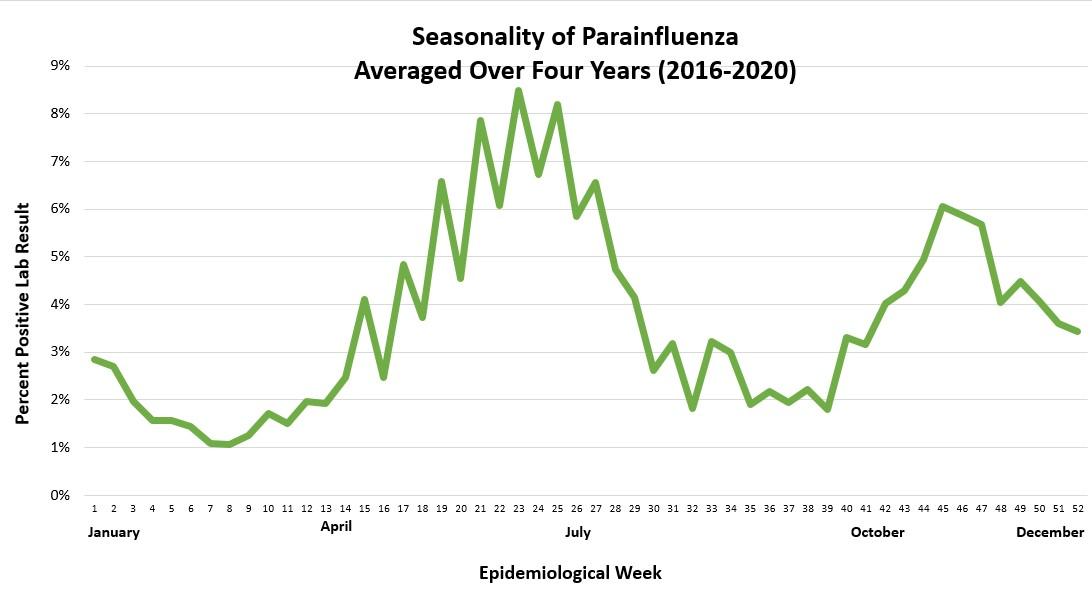Parainfluenza
Parainfluenza viruses cause respiratory illnesses.
They are most common in infants and young children, though anyone can be infected.
Four types of parainfluenza viruses cause illness.
To find current levels and transmission of respiratory viruses in Wisconsin, visit Respiratory Virus Data.
Respiratory viruses are primarily spread to others by respiratory droplets and aerosols that travel through the air when an infected person breathes, speaks, sings, coughs, or sneezes. They can also be spread by contact – either with the infected person (like kissing or shaking hands), or by touching contaminated surfaces and then touching your mouth, nose, or eyes. These viruses can survive on surfaces for many hours.
After you are infected with parainfluenza, it takes about two to seven days before you develop symptoms.
Symptoms usually include:
- Fever
- Runny nose
- Coughing
- Croup (an infection in the upper airway that obstructs breathing and causes a barking cough)
- Bronchitis (inflammation of the airways of the lungs)
- Bronchiolitis (infection of the smallest air passages in the lungs)
- Pneumonia (infection of the lungs)
- Sore throat
- Sneezing
- Ear pain
- Irritability
- Decreased appetite
If your symptoms are severe or do not improve, you should seek medical attention.
There is no specific antiviral treatment for parainfluenza illnesses. Most people will recover on their own. You can relieve your symptoms by:
- Taking pain or fever medications (note: never give aspirin to children)
- Using a room humidifier or taking a hot shower to help ease a sore throat and cough
- Drinking plenty of liquids to stay hydrated
- Staying home and resting
If you are concerned about your symptoms, contact your health care provider.
- Avoid close contact with sick people.
- Wash your hands for at least 20 seconds.
- Avoid touching your face (especially mouth, nose, and eyes).
- Cover your mouth and nose when coughing or sneezing.
- Disinfect objects and surfaces regularly (like doorknobs, countertops, and light switches).
Depending on the type of parainfluenza virus, infections are most common in the fall, or the spring and early summer.
- CDC (Centers for Disease Control and Prevention): Human Parainfluenza Viruses (HPIVs) Homepage
- Department of Health Services (DHS): Wash Your Hands!, P-01710: Flyer with instructions on how to properly wash hands.
- DHS: Respiratory Viruses, P-03082: An informative fact sheet explaining the similarities and differences between different respiratory viruses.
Individual cases of parainfluenza are not reportable in Wisconsin. However, clusters of three or more unrelated persons with similar clinical signs and symptoms should be reported to the local health department.
Questions about parainfluenza? Contact us!
Phone: 608-267-9003 | Fax: 608-261-4976


